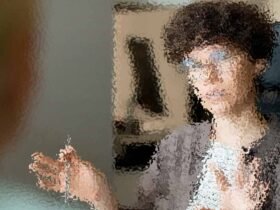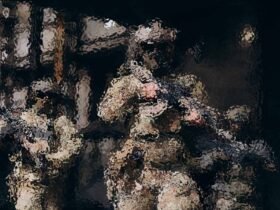Dictionary
It is a kind of a book or reference that containing words of a language, arranged alphabetically and showing class and uses. We often use a dictionary to look up a word.
We do this when we do not know what the word means. Dictionaries are organised to help us look up word easily
How to use a dictionary effectively
Reasons for using a dictionary
A dictionary is a very important tool for anyone who is learning a new language. With a good dictionary you can do the following:
- look up the meaning of an English word you see or hear
- find the English translation of a word in your language
- check the spelling of a word
- check the plural of a noun or past tense of a verb
- find out other grammatical information about a word
- find the synonym or antonym of a word
- look up the collocations of a word
- check the part of speech of a word
- find out how to say a word
- find out about the register of a word
- find examples of the use of a word in natural language
To be a good dictionary user, however, it is not enough to know what to use the dictionary for. You must also decide which is the best dictionary for any of the purposes listed above. As well as this, you need to be able to find what you are looking for quickly; you need to be sure that you have found what you were looking for; and, most importantly, you need to know when to use your dictionary.
Knowing which dictionary to use
Electronic dictionaries are the best choice for ESL students. Most of them contain native-language equivalents and explanations, as well as definitions and example sentences in English. They can speak the English word to you, and they are easy to carry around. However, they are expensive and easy to lose, so put your name on yours!
A cheaper possibility, if you are going to work at the computer, is to use an online dictionary. A very good one for ESL students is the Longman Dictionary of Contemporary English. Alternatively, if you open Google and type, for example, define: superstitious, you will get a long list of different definitions of superstitious.
A good monolingual dictionary is recommended for students who already have a high standard of English and want to learn about word use.
Finding words quickly
This is a skill that you need to practise. Ask someone to write down 5 words and see how long it takes you to find them. Of course, you will need to know the English alphabet perfectly, so practise this too. Use the guide words at the top of each dictionary page; and keep practising until you can find any word within 10 seconds. You should also practise finding words in your own language in your bilingual dictionary. If you use an electronic dictionary, take some time at home to learn how it works and, again, practise finding words quickly.
Finding the right meaning of an English word
Very often when you look up a new English word, you find that it has more than one meaning. If you are not sure which one is correct, here’s what you can do:
- First, check through all the meanings and find the one that makes most sense in the context where you found the word. (Very often, many of the different meanings are similar and this should be enough to give you a good idea what the word means.)
- Second, if you really want to make sure, think what the word is in your own language and look it up in a bilingual dictionary. If one of the English translations is the original word you looked up, then you can be satisfied that you have found the right meaning.
Finding the right spelling
Another problem you may have is when you want to check your spelling but you can’t find the word you’re looking for. What can you do?
- If you are sure of the first few letters, just look down the page until you find the right spelling. (Again, it is helpful to check the meaning is the one you expect.)
- If you are not sure of the first few letters, try some other possibilities. You know for example that some words that start with an -n sound have k as their first letter; e.g. knife, knight. So if you can’t find the word under N, try looking in the K pages.
- If you still can’t find the word, think what it is in your language and look it up in your bilingual dictionary.
Finding the right English translation of a word in your language
When you look up a word in your own language in a bilingual dictionary, you will probably find that there is more than one English translation. If you are not sure which to use, you could try a back translation. This means that you look up the English translations one by one in a monolingual dictionary. If a word has a definition that matches the word in your language, you are safe to use it.
Knowing when to use the dictionary
If you look up every new word you see or hear, you will spend your whole day with the dictionary in your hand. That’s no good! You have to be clever and choose the right words to check and the right time to do it. Try to follow the advice below and you will become a much more efficient language learner:
- When you find a new word while reading, finish the sentence (better: the paragraph). If you haven’t guessed the meaning and it still seems important, then you can look it up. To avoid interrupting your reading for too long, you should find its meaning in your own language using a bilingual dictionary.
- When you hear a new word in class (or the teacher has written it on the board), wait and continue listening. What the teacher says next may help you to understand the word. If you look in your dictionary, you will not hear what comes next, and this will make understanding the lesson more and more difficult.
If you think the word is very important, you could copy it from the board or write how you think it is spelled. Then later you could ask the teacher or another student what it means.
What information can be found in a dictionary?
Whatever type of dictionary you use, it is worthwhile spending some time with the user’s guide, i.e. the initial pages that explain what kind of information is provided in the dictionary, the layout of the entries, and often also a legend that explains what the symbols used in the dictionary mean.
In terms of what type of information is given in a typical entry, here is an example of what is normally found in a mono-lingual dictionary (here based on the structure in the Longman Dictionary of Contemporary English (LDOCE):
1. Spelling: the headword itself is given in its normal spelling, printed in bold. Headwords are arranged alphabetically in a dictionary.
2. Frequency information: symbols indicating how frequent the word is in spoken and written English. In LDOCE the symbols are boxes with either an’S’ (spoken) or a ‘W’ (written) followed by a number. For example, a box saying W2 means that the headword in question belongs to the second thousand most common words in written English.
3. Pronunciation: phonetic script, given within parentheses ( ) or slash / / brackets, tells us how to pronounce the word (the pronunciation of the word is transcribed following the International Phonetic Alphabet (IPA)).
4. Word class: the word class (also called part-of-speech) of the word and other grammatical information is provided following conventional abbreviations, such as n for Noun and v for Verb.
5. Sense(s): when a word has more than one meaning, then the different senses are numbered. When a sense or a group of senses belong to a different word class, this is indicated. For each sense, a definition is given which at the same time also functions as an explanation of its meaning.
6. Collocations, phrasal use and the syntactic operation of the word: examples are given of how the headword may be combined with other words to form idiomatic language usage.
Importance of Dictionary book
- Gives meaning of words
- Shows words of the same meaning
- Shows words which mean the opposite
- Show the classes of word (verb, nouns, objectives)
- Show how words are used
- Show how words are made
- Show how words are pronounced.
Synonyms: words, which mean the same, a called synonyms
Examples: -Angry – mad Cried – shouted Huge – big Hate – dislike Clever – bright
Antonyms: A dictionary also shows words which mean the opposite words which means the opposite are called antonyms
Examples:
o Hate – like
o Ugly – beautiful
o Slow – fast
o Friendly – enemy
o Strong – weak
Word formation
A dictionary also shows how words are made. This is called word formation
– A noun can be made from a verb or from an Adjective
Example vacate (v) –vocation (N)
Some Nouns end with
(i) …………….. ion (examination)
(ii) …………………ty (beauty)
(iii) ………………….ness (politeness)
(iv) ……………………ce (importance)
Some of the objectives end with
(i) ………… ous (poisonous)
(ii) …………. Al (trial)
(iii) …………..ic (electric)
(iv) ………….. an (African)
(v) ………….. ful (helpful)
Pronunciation: A dictionary shows how words are pronounced English words are pronounced differently from Kiswahili. The way the English words are written is different from the way they pronounced.
Example: see –pronounced as /si/ and not see
Exercise
Write the following words as they are pronounced in the dictionary
Example: King –/KiÅ‹/
(i) Sing =
(ii) Cheek =
(iii) Cart =
(iv) Chest =
(v) Dish =
Exercise
Show differences of pronunciation of the underlined words.
- Please sit on the seat
- I left my hat in the hut
- Pull the boy from the pool
- Do not hurt my heart














I have enjoyed very much this section which is very useful to the students. Thank you very much.